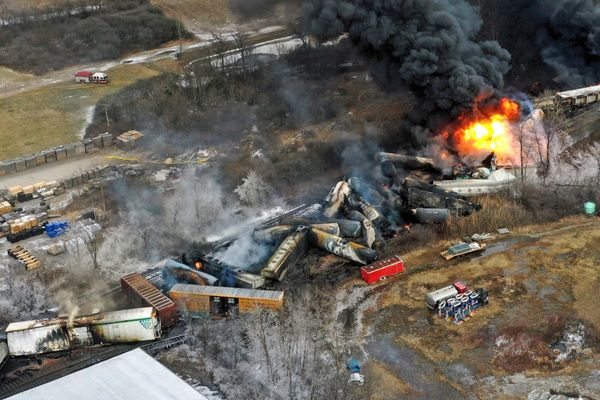
The integrity of Sydney’s main dam has been found to be at risk under “extreme and rare flooding scenarios” based on a reassessment of the impact of climate change and a better understanding of a “weak” geological seam sitting beneath the dam wall.
As Guardian Australia reported last month, incoming New South Wales government ministers were surprised to be briefed about safety issues that may require construction work on the Warragamba dam wall.
It can now be revealed WaterNSW first informed the regulator, Dam Safety NSW, of potential issues back in 2020. It received funding for more work under previous Coalition government and completed its initial study in March during the pre-election caretaker period.
Water minister, Rose Jackson, stressed the size of risks to residents in the Hawkesbury-Nepean flood plain below the dam was “infinitesimal”.
“WaterNSW are working with Dam Safety NSW to do that really thorough risk assessment and investigation to give us a sense of what, if any, action they feel needs to be taken,” Jackson said. “We take all even extremely unlikely identified risks seriously.”
The two identified risks relate to the effect extreme and rare floods would have on Warragamba’s 142-metre wall. “It is theorised that a geological seam under the dam wall could threaten its integrity,” WaterNSW said in a brief, explaining that the wall could potentially shift.
The other threat under those very unlikely events is that “water levels in the lake behind the dam could rise and cause the dam to be overtopped, which could damage the dam asset (wall and gates),” WaterNSW said.
WaterNSW’s chief executive, Andrew George, said engineers had known of the existence of a weaker geological seam beneath the wall but it had not previously been considered a risk.
His agency had lately completed a drilling program to understand the extent of the geotechnical risks and had it reviewed by domestic and international experts.
“We now need to more forensically examine the risk and we need to apply a cost-benefit framework to any interventions that may resolve the problem, and to determine whether or not it’s reasonable,” George said, adding, “I’ve really got to stress this is not a risk for the community today.”
Warragamba dam supplies about 80% of Sydney’s drinking water, an unusually large concentration by international standards. Its capacity of about 2,000 gigalitres, or four times the size of Sydney Harbour, is fed by a catchment covering more than 9000 square kilometres.
Built between 1948 and 1960, the dam wall was strengthened and raised by 5m in the late 1980s and had an auxiliary spillway added in the early 2000s.
The Coalition government had pledged to raise the wall by another 14m to reduce the threat of downstream flooding. Indigenous and environment groups objected to a project that would have inundated as many as 50 heritage sites and thousands of hectares in the world heritage-listed greater Blue Mountains area.
Labor remains opposed to lifting the dam wall, which the parliamentary budget office said in March would cost $1.95bn even before the inclusion of payments to offset the environmental damage.
Jackson said it was “bizarre, frustrating and surprising” the previous government had not made public details of the investigations that it had funded.
“Although the risk was identified, the first time I heard about it was when I become water minister,” Jackson said. “You might as well just be upfront about it.”
Guardian Australia approached former water minister Kevin Anderson for comment.
“We’ve categorically ruled out raising the dam wall for flood mitigation,” Jackson said. “The idea that increasing the height of the dam wall is a potential risk mitigation measure for these [integrity] risks is just so far down the track as to be really not in our contemplation.”
George said “a lot of the risks” had become evident “because of our understanding of climate change and the climate modelling”.
“We’re learning more about what the atmosphere could hold in terms of moisture and rainfall,” he said, including advances in statistical hydrology over the past decade.
The atmosphere can hold roughly 7% more moisture for every degree of warming. The Bureau of Meteorology estimates the Australian continent warmed by 1.47C between 1910 and 2021.
George said any work on the dam wall, if needed, to address the risks would more likely involve making the dam thicker rather than higher. Construction of a concrete buttress or anchoring to strengthen the current wall were among the response still being investigated.
Chris Salkovic, chief executive of Dams Safety NSW, said his agency would be reviewing the information provided by WaterNSW on its investigation of risks and risk-reduction options in coming weeks.
Jackson said she was expecting a full report from WaterNSW “in about eight to 12 months”.







